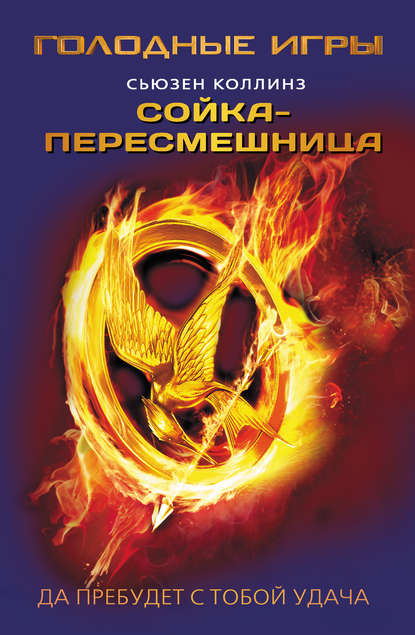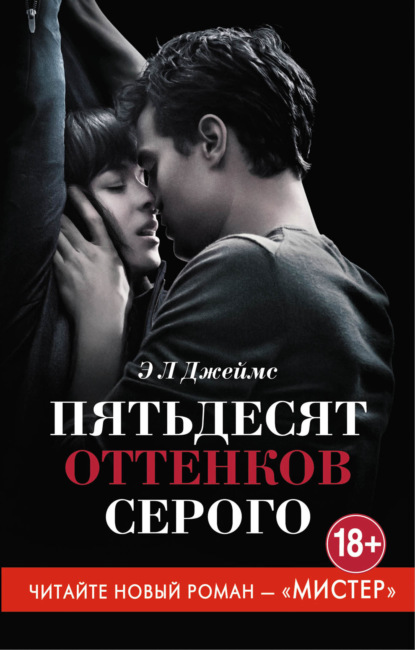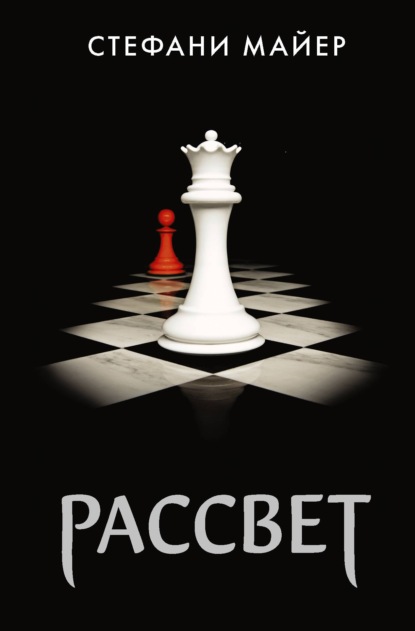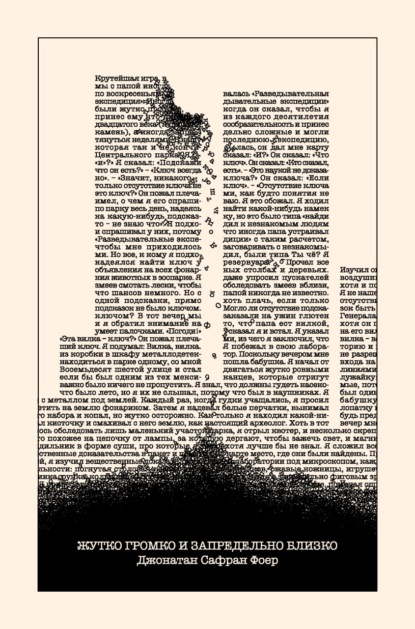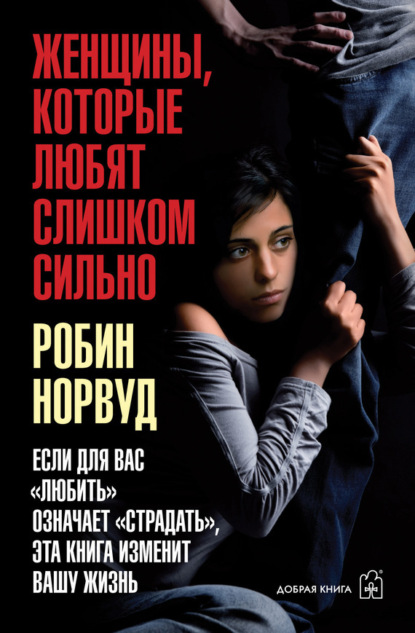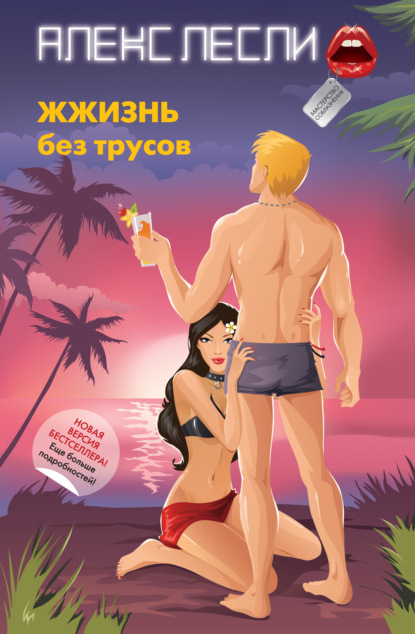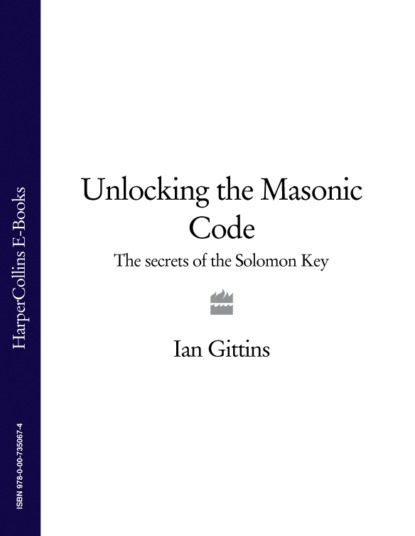
Текст
отзывы: 0 | рейтинг: 0
Unlocking the Masonic Code: The Secrets of the Solomon Key
Жанр:
Эзотерика и теософия
Язык:
Английский
Тип:
Текст
Год издания:
2019
Полная версия
Полная версия
1
Unlocking the Masonic Code: The Secrets of the Solomon Key
Ian Gittins
Explores all aspects of the most talked about secret society in the world, from its most famous members to its infamous history.For centuries the Freemasonry has been the subject of rumour and intrigue. From its obscure origins to the suspicion that it exercises huge influence on government and multinational corporations, there has always been more than a whiff of controversy about the organisation.Unlocking the Masonic Code reveals the truth behind the myths, sifts the facts from the fiction, and unveils the mysterious rites and ceremonies. Ian Gittins delves deep into the true origins of the society, its philosophy and practices, describes the rituals, and profiles a number of key figures. Along the way, he also shows where fact and fiction have fought, and fiction has won the battle.
Unlocking the Masonic Code: The Secret of the Solomon Key
Ian Gittins
For Mum and Dad
‘May Freedom, Harmony and Love Unite you in the grand Design Beneath th’Omniscient Eye above The glorious Architect Divine’
Robert Burns, The Farewell to the Brethren of St James Lodge, Tarbolton (1786)
Table of Contents
Cover Page (#u3c867512-a2f4-5047-bd2d-84d58952a8d1)
Title Page (#ud713aade-a04c-5192-b79b-c90b076551a6)
Dedication (#ua8748324-010a-5413-ab28-387578012281)
Epigraph (#uf9d5b5ca-f5ef-5232-99f5-81cde03b0349)
INTRODUCTION (#u1f0516ab-8c07-5eb3-b099-9f3f2e20aa58)
- 1 - THE REAL HISTORY OF FREEMASONRY (#u6623bbb3-9dee-5f45-841a-278ff94cbfd9)
- 2 - THE NOTIONAL HISTORY OF FREEMASONRY: GREAT CONSPIRACY THEORIES (#uc0259b04-15d8-5886-b29e-fa5a310ed686)
- 3 - INSIDE THE LODGE—MASONIC RITUALS AND SYMBOLS (#ua63aad5a-9ca0-53e1-b90f-386ac8ff8b98)
- 4 - MASONIC SYMBOLS—A BRIEF GUIDE (#u242763e5-cf6e-5610-bc32-80169e3ef7c1)
- 5 - FAMOUS FREEMASONS (#u16caa967-f424-5cc7-ad59-af73960d13f5)
INDEX (#u28bb6af0-4b80-5e7b-9e34-22209f8d93c5)
Copyright (#u2b077eda-37bc-5d76-9355-f7225cf0cf8a)
About the Publisher (#u46e18418-da2e-52d8-b995-37c52f32c0b6)
INTRODUCTION (#ulink_3ba0ce8d-781a-51fa-b629-9bfc2253c8dd)
The pseudo-historical fiction of Dan Brown is the publishing phenomenon of the first few years of the twenty-first century. By early 2005, over twenty-five million copies of The Da Vinci Code, the Gordian knot of a detective novel that saw Harvard Professor Robert Langdon in learned pursuit of the Holy Grail, were in print around the globe. Brown’s intricate weaving of mysticism, alternative history and cryptic symbolism into a good old-fashioned pot-boiler clearly touched a nerve in the worldwide popular consciousness.
As the year progressed, and with a Ron Howard-directed Hollywood movie of The Da Vinci Code starring Tom Hanks and Audrey Tatou at an advanced stage of production, Brown acolytes speculated over what the author’s next move would be. Countless Da Vinci Code-fixated chat rooms and fansites hummed with chatter and speculation. At which point, with The Da Vinci Code’s worldwide sales up to forty million, Brown himself revealed exactly where he would be directing Langdon next—into the dark heart of Freemasonry.
Writing on his own website, www.danbrown. com, the author had this to say about the legendarily secretive Masons: ‘My interest sparks from growing up in New England, surrounded by the clandestine clubs of Ivy League universities, the Masonic lodges of our Founding Fathers, and the hidden hallways of early government power.’ His next novel, The Solomon Key, would, he confirmed, be set ‘deep within the oldest fraternity in history—the enigmatic brotherhood of the Masons.’
In truth, it is not terribly difficult to comprehend the appeal of Freemasonry to Brown in a novelistic context. His books are labyrinthine riddles, set in a world of proscribed societies, arcane and complex symbolism and historical facts and suppositions woven into the sort of beguiling conspiracy theories that invariably attract eager adherants. What could suit his creative purposes better than a mysterious, ancient fraternal society with its own mythology founded on an opaque system of secret symbols, rituals and handshakes?
Broadly speaking, there are two schools of thought on the Masons. The first—grounded in reality, and therefore of little use to Brown—is that the Freemasons are a modern anachronism, an eccentric but essentially benign organization of men whose well-developed sense of selfimportance is a minor flaw compared to the many good charitable works that they do. This view holds that, given the increasing average age of the membership, the fraternity is unlikely to survive in any significant form beyond the next two or three decades.
The rival opinion, and the one seized upon by Brown, is that the Freemasons are a shadowy grouping of sinister malcontents bent on subverting society and possibly—eventually—achieving world domination. The more turbo-charged conspiracy theorists out there even argue that the organization is in possession of ancient mystical secrets, of a sacred or even occult nature, handed down to them by the Knights Templar, the famous chapter of medieval warrior knights.
The more pathologically driven detractors point towards the significant role played by Masons in the birth of America—many of the Founding Fathers were Freemasons, as was the first President, George Washington—and imply that the fraternity, even today, still enacts a Machiavellian influence at the very apex of politics and the worlds of finance and business. Such loaded theorizing, naturally, is manna from heaven to a novelist as shrewd as Dan Brown as he sets about weaving a work of charged fiction like The Solomon Key.
So, are the Freemasons a bunch of harmless old duffers indulging in a little fanciful role-playing—essentially, Britain’s Rotary Club or America’s Elks with their trouser-legs rolled up—or are they mystical, scheming figures with powers and knowledge beyond the ken of the uninitiated? To gain a little insight, let’s begin by examining the organization’s philosophy and modus operandi.
What is Freemasonry?
Frequently described as a ‘peculiar system of morality veiled in allegory and illuminated by symbols’, Freemasonry remains the largest and most high-profile/notorious secular fraternal society in the world. While it is known to have descended from the stonemasons’ guilds of medieval times, as we shall explain in depth in Chapter 1: The Real History of Freemasonry, some argue that its lineage extends right back to the time of King Solomon—a deeply tenuous claim, but one that we shall examine in greater depth later in this book.
Few dispute that Freemasonry is in decline, with the fraternity’s membership numbers consistently dropping since the Sixties. Nevertheless, it remains a formidable organization. There are still more than five million Masons worldwide—four million of them in the United States, 500,000 in England and Wales, slightly under 400,000 in Scotland, and significant numbers in France, Canada, Australia and Ireland, as well as smaller but active chapters in Latin America, India, Japan, the Philippines and Israel.
At heart—leaving aside, for a second, its complex and intimidating historical provenance—Freemasonry is a benevolent philosophical movement. Members are taught to develop their character and altruistic instincts via a series of catechisms and ritual dramas, through which they progress through the fraternity until they are initiated as a Master Mason. The rituals and ceremonies are so arcane—and we shall detail them in full later in the book—that one almost suspects the movement’s legendary secrecy is intended primarily to save them from the howls of mockery of the outside world.
Yet setting such scepticism temporarily aside, the Masons’ motivations are largely noble ones. Initiates are told to cherish and propound the three central tenets of brotherly love, charity towards fellow Masons and the wider world, and truth. On a purely practical level, there is no denying the good works carried out by the fraternity: it is estimated that British Masons spend around £3 million per year on charitable projects. In America, the figure is nearer to $1 billion.
The Masons have suffered a degree of ridicule in recent decades due to the impenetrable rituals and extraordinary ceremonies that have defined the movement in the public imagination. Their formalities can seem ludicrously exclusive and laughably pompous. Dan Brown possibly deserves a degree of grudging recognition for his achievement in making a centuries-old, arcane grouping of pensioners and retirees appear like a dangerous and intimidating global force blessed/burdened with mystical secrets and knowledge.
Although its roots are in Christianity, the Freemasons (or ‘the Craft’ as it is often known) are a determinedly secular gathering. Members are required to pledge allegiance to a Supreme Being, but there is no obligation specifically to identify this deity as the Christian God, Allah or Buddha. During all Masonic meetings or ceremonies, this Supreme Being is referred to as the Grand Architect Of The Universe—a nondenominational philosophy that has led Masonry to be condemned by most major religions at some point in its eventful history.
Freemasons meet at regular intervals—normally once per month—in a local headquarters known as a lodge. Although these buildings are sometimes made available to the public for non-Masonic activities, they all contain an inner sanctum ritual area, laid out in a highly defined fashion and decorated with elaborate symbols, in which meetings and degree ceremonies are held. These areas are out of bounds to cynics, the curious and non-Masons in general.
Each local lodge is affiliated to a Grand Lodge, a regional over-body that serves as an administrative and legislative centre for the affiliate lodges. Yet this is about as coherent as the Craft gets. Inconveniently for Dan Brown and his fellow conspiracy theorists, there is no over-arching international body in charge of global Freemasonry: indeed, a history of various political and philosophical differences means that many Grand Lodges fail even to acknowledge each other’s existence. One is put in mind more of bickering parish councils than a furtive secret order hell-bent on establishing a self-serving New World Order.
The potential for international sedition is handicapped even further by the fact that Masons are not allowed to discuss religion, politics or any other traditionally divisive subject while inside the confines of the lodge. Nor is there any consideration of an after-life. Freemasons’ energies are directed entirely towards self-improvement on earth, a dogged quest for spiritual perfection towards which they proceed in regulated, formalized degrees.
How do you join the Freemasons?
The idea of exclusivity and covertness that surrounds the Masons is now largely a myth. Any male over twenty-one and with no criminal record who approaches a lodge is likely to be admitted. Existing members vote on whether the applicant should be allowed to join, but only in exceptional circumstances nowadays are people refused. With membership numbers falling, Masonic lodges are in desperate need of fresh blood.
Once the applicant is accepted, he educates himself in Freemasonry’s history and philosophy and is tested on his learning via a series of ritualistic degree ceremonies. These bizarre roleplaying exercises—wherein the initiate is blindfolded, led by a rope and has his trouser-legs and shirt-sleeves rolled up—is the limit of most people’s casual knowledge of the Masons, and leads to the common perception of the fraternity as being slightly less relevant to the modern world than the Flat Earth Society.
The initiate also learns a series of signs (passwords) and grips (handshakes) by which he can secretly make himself known to fellow Masons when they meet in public. These arcane relics of medieval days are the only facet of Freemasonry that the movement still tries to keep secret. Nevertheless, anti-Masonic militants have for years splashed this information over various anti-cult websites, and we shall also divulge this hallowed information at the appropriate point in this book (see Chapter 3: Inside The Lodge: Masonic Rituals and Symbols).
The three degrees that a Freemason travels through on his path to spiritual enlightenment are:
Entered Apprentice—the man is initiated into the lodge and swears allegiance to the Craft;
Fellow Craft—having proven himself willing and able, the member is given extra knowledge and responsibilities;
Master Mason—once he has reached this ‘supreme and exalted rank’, the Mason becomes a leading light of the lodge.
Men Only
Like the Great Room at Lord’s, Freemasonry remains a last bastion of male chauvinism. Masonry was a maleonly province until 1877, when maverick French Grand Lodge the Grand Orient de France horrified traditionalist Masons by admitting female members. This led to the French body being ostracized by most of the movement, and today both English and US Masonry’s controlling bodies refuse to admit women. Yet there are a few female lodges in England that are grudgingly semi-recognized by the United Grand Lodge of England (UGLE), who in 1999 confirmed ‘Freemasonry is not confined to men’ before hastily adding, ‘This Grand Lodge itself does not admit women’.
Particularly zealous Freemasons can collect further honours by taking the additional degrees of the York Rite and Scottish Rite—the latter discipline allows them to pursue no fewer than thirty-two levels of Masonic education and enlightenment. However, these ‘appendant’ degrees are optional, and theoretically even a 32nd degree Scottish Rite Mason is in no way superior to a common-or-garden Master Mason.
The names of the three main degrees awarded to Freemasons, and the phraseology used within the ceremonies, take their cue from the language used by the working stonemasons of the Middle Ages. These hugely gifted craftsmen made use of geometry and supreme architectural skills to build the soaring Gothic cathedrals whose very existence supposedly proved the glory of God. Their structures were viewed as a divine perfection on Earth.
As we shall see later in this book, Freemason philosophy likens the soul of every Mason to such an edifice. It is the task of the Freemason to improve himself morally and spiritually, through rite, ritual and a fundamental understanding of the world around him, until he aspires to a state of human perfection. Yet this perfection is viewed as the work of a Supreme Being—which is why atheists are not allowed to become Masons.
Wild-eyed anti-Masonic jihadists (and Dan Brown) may speculate about Freemasonry as a demonic, sinister cabal, but most modern objections to the movement are more workaday and prosaic. Outsiders have long considered the Freemasons to be an old boys’ club whose members will invariably do each other favours outside of the lodge. This view has been supported by various scandals over the years, including a damaging late 1970s court case in which senior London High Court judges, police chiefs and pornographers were implicated. It may not be the Knights Templar, but such corruption does the fraternity’s public relations image few favours.
Masonry’s riposte to this charge is that such nepotism is forbidden by statute. Freemasons are barred under the movement’s laws, or ‘Charges’, from using their membership to promote their own interests, or from extending cronyism to fellow lodge members. Theoretically, such lapses are punishable by expulsion from the fraternity, although it is reasonable to suspect that the handful of cases that have been discovered over the years represent the tip of the iceberg.
Nor are Freemasons particularly secretive nowadays. Beyond the signs, grips and precise ceremonies, the organization is largely an open book. Anybody wishing to approach their local Grand Lodge to discuss becoming a Mason will find their number in the telephone directory. In America, where they have always done things rather differently, lodges have even run billboard campaigns to attempt to boost their membership.
So with global Freemasonry in decline and its social significance and power arguably at it lowest point in centuries, what makes Dan Brown think the Craft is a fitting setting for the latest convoluted and faintly preposterous adventures of Robert Langdon? To answer that question, let’s examine the two parallel histories of Freemasonry—the real one, and the fanciful version that has over the years fuelled the imaginative fantasies of so many conspiracy theorists and exploitative opportunists.
Ian Gittins
Explores all aspects of the most talked about secret society in the world, from its most famous members to its infamous history.For centuries the Freemasonry has been the subject of rumour and intrigue. From its obscure origins to the suspicion that it exercises huge influence on government and multinational corporations, there has always been more than a whiff of controversy about the organisation.Unlocking the Masonic Code reveals the truth behind the myths, sifts the facts from the fiction, and unveils the mysterious rites and ceremonies. Ian Gittins delves deep into the true origins of the society, its philosophy and practices, describes the rituals, and profiles a number of key figures. Along the way, he also shows where fact and fiction have fought, and fiction has won the battle.
Unlocking the Masonic Code: The Secret of the Solomon Key
Ian Gittins
For Mum and Dad
‘May Freedom, Harmony and Love Unite you in the grand Design Beneath th’Omniscient Eye above The glorious Architect Divine’
Robert Burns, The Farewell to the Brethren of St James Lodge, Tarbolton (1786)
Table of Contents
Cover Page (#u3c867512-a2f4-5047-bd2d-84d58952a8d1)
Title Page (#ud713aade-a04c-5192-b79b-c90b076551a6)
Dedication (#ua8748324-010a-5413-ab28-387578012281)
Epigraph (#uf9d5b5ca-f5ef-5232-99f5-81cde03b0349)
INTRODUCTION (#u1f0516ab-8c07-5eb3-b099-9f3f2e20aa58)
- 1 - THE REAL HISTORY OF FREEMASONRY (#u6623bbb3-9dee-5f45-841a-278ff94cbfd9)
- 2 - THE NOTIONAL HISTORY OF FREEMASONRY: GREAT CONSPIRACY THEORIES (#uc0259b04-15d8-5886-b29e-fa5a310ed686)
- 3 - INSIDE THE LODGE—MASONIC RITUALS AND SYMBOLS (#ua63aad5a-9ca0-53e1-b90f-386ac8ff8b98)
- 4 - MASONIC SYMBOLS—A BRIEF GUIDE (#u242763e5-cf6e-5610-bc32-80169e3ef7c1)
- 5 - FAMOUS FREEMASONS (#u16caa967-f424-5cc7-ad59-af73960d13f5)
INDEX (#u28bb6af0-4b80-5e7b-9e34-22209f8d93c5)
Copyright (#u2b077eda-37bc-5d76-9355-f7225cf0cf8a)
About the Publisher (#u46e18418-da2e-52d8-b995-37c52f32c0b6)
INTRODUCTION (#ulink_3ba0ce8d-781a-51fa-b629-9bfc2253c8dd)
The pseudo-historical fiction of Dan Brown is the publishing phenomenon of the first few years of the twenty-first century. By early 2005, over twenty-five million copies of The Da Vinci Code, the Gordian knot of a detective novel that saw Harvard Professor Robert Langdon in learned pursuit of the Holy Grail, were in print around the globe. Brown’s intricate weaving of mysticism, alternative history and cryptic symbolism into a good old-fashioned pot-boiler clearly touched a nerve in the worldwide popular consciousness.
As the year progressed, and with a Ron Howard-directed Hollywood movie of The Da Vinci Code starring Tom Hanks and Audrey Tatou at an advanced stage of production, Brown acolytes speculated over what the author’s next move would be. Countless Da Vinci Code-fixated chat rooms and fansites hummed with chatter and speculation. At which point, with The Da Vinci Code’s worldwide sales up to forty million, Brown himself revealed exactly where he would be directing Langdon next—into the dark heart of Freemasonry.
Writing on his own website, www.danbrown. com, the author had this to say about the legendarily secretive Masons: ‘My interest sparks from growing up in New England, surrounded by the clandestine clubs of Ivy League universities, the Masonic lodges of our Founding Fathers, and the hidden hallways of early government power.’ His next novel, The Solomon Key, would, he confirmed, be set ‘deep within the oldest fraternity in history—the enigmatic brotherhood of the Masons.’
In truth, it is not terribly difficult to comprehend the appeal of Freemasonry to Brown in a novelistic context. His books are labyrinthine riddles, set in a world of proscribed societies, arcane and complex symbolism and historical facts and suppositions woven into the sort of beguiling conspiracy theories that invariably attract eager adherants. What could suit his creative purposes better than a mysterious, ancient fraternal society with its own mythology founded on an opaque system of secret symbols, rituals and handshakes?
Broadly speaking, there are two schools of thought on the Masons. The first—grounded in reality, and therefore of little use to Brown—is that the Freemasons are a modern anachronism, an eccentric but essentially benign organization of men whose well-developed sense of selfimportance is a minor flaw compared to the many good charitable works that they do. This view holds that, given the increasing average age of the membership, the fraternity is unlikely to survive in any significant form beyond the next two or three decades.
The rival opinion, and the one seized upon by Brown, is that the Freemasons are a shadowy grouping of sinister malcontents bent on subverting society and possibly—eventually—achieving world domination. The more turbo-charged conspiracy theorists out there even argue that the organization is in possession of ancient mystical secrets, of a sacred or even occult nature, handed down to them by the Knights Templar, the famous chapter of medieval warrior knights.
The more pathologically driven detractors point towards the significant role played by Masons in the birth of America—many of the Founding Fathers were Freemasons, as was the first President, George Washington—and imply that the fraternity, even today, still enacts a Machiavellian influence at the very apex of politics and the worlds of finance and business. Such loaded theorizing, naturally, is manna from heaven to a novelist as shrewd as Dan Brown as he sets about weaving a work of charged fiction like The Solomon Key.
So, are the Freemasons a bunch of harmless old duffers indulging in a little fanciful role-playing—essentially, Britain’s Rotary Club or America’s Elks with their trouser-legs rolled up—or are they mystical, scheming figures with powers and knowledge beyond the ken of the uninitiated? To gain a little insight, let’s begin by examining the organization’s philosophy and modus operandi.
What is Freemasonry?
Frequently described as a ‘peculiar system of morality veiled in allegory and illuminated by symbols’, Freemasonry remains the largest and most high-profile/notorious secular fraternal society in the world. While it is known to have descended from the stonemasons’ guilds of medieval times, as we shall explain in depth in Chapter 1: The Real History of Freemasonry, some argue that its lineage extends right back to the time of King Solomon—a deeply tenuous claim, but one that we shall examine in greater depth later in this book.
Few dispute that Freemasonry is in decline, with the fraternity’s membership numbers consistently dropping since the Sixties. Nevertheless, it remains a formidable organization. There are still more than five million Masons worldwide—four million of them in the United States, 500,000 in England and Wales, slightly under 400,000 in Scotland, and significant numbers in France, Canada, Australia and Ireland, as well as smaller but active chapters in Latin America, India, Japan, the Philippines and Israel.
At heart—leaving aside, for a second, its complex and intimidating historical provenance—Freemasonry is a benevolent philosophical movement. Members are taught to develop their character and altruistic instincts via a series of catechisms and ritual dramas, through which they progress through the fraternity until they are initiated as a Master Mason. The rituals and ceremonies are so arcane—and we shall detail them in full later in the book—that one almost suspects the movement’s legendary secrecy is intended primarily to save them from the howls of mockery of the outside world.
Yet setting such scepticism temporarily aside, the Masons’ motivations are largely noble ones. Initiates are told to cherish and propound the three central tenets of brotherly love, charity towards fellow Masons and the wider world, and truth. On a purely practical level, there is no denying the good works carried out by the fraternity: it is estimated that British Masons spend around £3 million per year on charitable projects. In America, the figure is nearer to $1 billion.
The Masons have suffered a degree of ridicule in recent decades due to the impenetrable rituals and extraordinary ceremonies that have defined the movement in the public imagination. Their formalities can seem ludicrously exclusive and laughably pompous. Dan Brown possibly deserves a degree of grudging recognition for his achievement in making a centuries-old, arcane grouping of pensioners and retirees appear like a dangerous and intimidating global force blessed/burdened with mystical secrets and knowledge.
Although its roots are in Christianity, the Freemasons (or ‘the Craft’ as it is often known) are a determinedly secular gathering. Members are required to pledge allegiance to a Supreme Being, but there is no obligation specifically to identify this deity as the Christian God, Allah or Buddha. During all Masonic meetings or ceremonies, this Supreme Being is referred to as the Grand Architect Of The Universe—a nondenominational philosophy that has led Masonry to be condemned by most major religions at some point in its eventful history.
Freemasons meet at regular intervals—normally once per month—in a local headquarters known as a lodge. Although these buildings are sometimes made available to the public for non-Masonic activities, they all contain an inner sanctum ritual area, laid out in a highly defined fashion and decorated with elaborate symbols, in which meetings and degree ceremonies are held. These areas are out of bounds to cynics, the curious and non-Masons in general.
Each local lodge is affiliated to a Grand Lodge, a regional over-body that serves as an administrative and legislative centre for the affiliate lodges. Yet this is about as coherent as the Craft gets. Inconveniently for Dan Brown and his fellow conspiracy theorists, there is no over-arching international body in charge of global Freemasonry: indeed, a history of various political and philosophical differences means that many Grand Lodges fail even to acknowledge each other’s existence. One is put in mind more of bickering parish councils than a furtive secret order hell-bent on establishing a self-serving New World Order.
The potential for international sedition is handicapped even further by the fact that Masons are not allowed to discuss religion, politics or any other traditionally divisive subject while inside the confines of the lodge. Nor is there any consideration of an after-life. Freemasons’ energies are directed entirely towards self-improvement on earth, a dogged quest for spiritual perfection towards which they proceed in regulated, formalized degrees.
How do you join the Freemasons?
The idea of exclusivity and covertness that surrounds the Masons is now largely a myth. Any male over twenty-one and with no criminal record who approaches a lodge is likely to be admitted. Existing members vote on whether the applicant should be allowed to join, but only in exceptional circumstances nowadays are people refused. With membership numbers falling, Masonic lodges are in desperate need of fresh blood.
Once the applicant is accepted, he educates himself in Freemasonry’s history and philosophy and is tested on his learning via a series of ritualistic degree ceremonies. These bizarre roleplaying exercises—wherein the initiate is blindfolded, led by a rope and has his trouser-legs and shirt-sleeves rolled up—is the limit of most people’s casual knowledge of the Masons, and leads to the common perception of the fraternity as being slightly less relevant to the modern world than the Flat Earth Society.
The initiate also learns a series of signs (passwords) and grips (handshakes) by which he can secretly make himself known to fellow Masons when they meet in public. These arcane relics of medieval days are the only facet of Freemasonry that the movement still tries to keep secret. Nevertheless, anti-Masonic militants have for years splashed this information over various anti-cult websites, and we shall also divulge this hallowed information at the appropriate point in this book (see Chapter 3: Inside The Lodge: Masonic Rituals and Symbols).
The three degrees that a Freemason travels through on his path to spiritual enlightenment are:
Entered Apprentice—the man is initiated into the lodge and swears allegiance to the Craft;
Fellow Craft—having proven himself willing and able, the member is given extra knowledge and responsibilities;
Master Mason—once he has reached this ‘supreme and exalted rank’, the Mason becomes a leading light of the lodge.
Men Only
Like the Great Room at Lord’s, Freemasonry remains a last bastion of male chauvinism. Masonry was a maleonly province until 1877, when maverick French Grand Lodge the Grand Orient de France horrified traditionalist Masons by admitting female members. This led to the French body being ostracized by most of the movement, and today both English and US Masonry’s controlling bodies refuse to admit women. Yet there are a few female lodges in England that are grudgingly semi-recognized by the United Grand Lodge of England (UGLE), who in 1999 confirmed ‘Freemasonry is not confined to men’ before hastily adding, ‘This Grand Lodge itself does not admit women’.
Particularly zealous Freemasons can collect further honours by taking the additional degrees of the York Rite and Scottish Rite—the latter discipline allows them to pursue no fewer than thirty-two levels of Masonic education and enlightenment. However, these ‘appendant’ degrees are optional, and theoretically even a 32nd degree Scottish Rite Mason is in no way superior to a common-or-garden Master Mason.
The names of the three main degrees awarded to Freemasons, and the phraseology used within the ceremonies, take their cue from the language used by the working stonemasons of the Middle Ages. These hugely gifted craftsmen made use of geometry and supreme architectural skills to build the soaring Gothic cathedrals whose very existence supposedly proved the glory of God. Their structures were viewed as a divine perfection on Earth.
As we shall see later in this book, Freemason philosophy likens the soul of every Mason to such an edifice. It is the task of the Freemason to improve himself morally and spiritually, through rite, ritual and a fundamental understanding of the world around him, until he aspires to a state of human perfection. Yet this perfection is viewed as the work of a Supreme Being—which is why atheists are not allowed to become Masons.
Wild-eyed anti-Masonic jihadists (and Dan Brown) may speculate about Freemasonry as a demonic, sinister cabal, but most modern objections to the movement are more workaday and prosaic. Outsiders have long considered the Freemasons to be an old boys’ club whose members will invariably do each other favours outside of the lodge. This view has been supported by various scandals over the years, including a damaging late 1970s court case in which senior London High Court judges, police chiefs and pornographers were implicated. It may not be the Knights Templar, but such corruption does the fraternity’s public relations image few favours.
Masonry’s riposte to this charge is that such nepotism is forbidden by statute. Freemasons are barred under the movement’s laws, or ‘Charges’, from using their membership to promote their own interests, or from extending cronyism to fellow lodge members. Theoretically, such lapses are punishable by expulsion from the fraternity, although it is reasonable to suspect that the handful of cases that have been discovered over the years represent the tip of the iceberg.
Nor are Freemasons particularly secretive nowadays. Beyond the signs, grips and precise ceremonies, the organization is largely an open book. Anybody wishing to approach their local Grand Lodge to discuss becoming a Mason will find their number in the telephone directory. In America, where they have always done things rather differently, lodges have even run billboard campaigns to attempt to boost their membership.
So with global Freemasonry in decline and its social significance and power arguably at it lowest point in centuries, what makes Dan Brown think the Craft is a fitting setting for the latest convoluted and faintly preposterous adventures of Robert Langdon? To answer that question, let’s examine the two parallel histories of Freemasonry—the real one, and the fanciful version that has over the years fuelled the imaginative fantasies of so many conspiracy theorists and exploitative opportunists.
1
Другие книги автора:
Популярные книги





